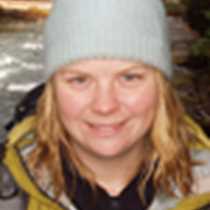Pavlof Harbor and Cruising Chatham Strait
Good morning. It is 6:30 am and we have a group of humpback whales cooperatively feeding. Dress warmly and join us on the bow.
During this trip, we have fully used our 17 hours of daylight to hike, kayak, and watch wildlife. After five days of similar wake-up calls, this early morning wildlife report was not unusual, except for the extraordinary nature of the sighting. The humpback whales dove in quick succession; one, two, three… eleven flukes disappeared beneath the water. Eleven open mouths with distended throat pleats filled with water and herring surfaced in unison as shouts emanated from onlookers on the bow. From a birds-eye view, we would have seen a net of bubbles break the water surface just before the whales broke through, consuming their prey. Cooperative bubble-net feeding is an exceptional event that takes place in the waters of Southeast Alaska. The mysteries of this feeding technique have slowly been unraveled by researchers such as Fred Sharpe of the Alaska Whale Foundation. Although we could not dive beneath the water to see the production of the bubble net, positively identify the one whale responsible for its creation, or know the history of the whales involved, we were able to appreciate the spectacular display of feeding that requires communication and cooperation between the whales. We paralleled the whales as they routinely dove and surfaced off of the coast of Chichagof Island, anxiously anticipating when they would surface again. After watching the whales feed for over an hour, breakfast was called and we commenced our morning feeding in the dining room.
Hikes this morning were at Pavlof Harbor in Freshwater Bay on Chichagof Island. When we arrived, the tide was out and the stream from Pavlof Lake cascaded over bedrock ledges, algae nearly six feet up the banks. As we rounded a corner, a stream-wide waterfall entered our view. Over head, adult eagles cavorted while a juvenile perched in a tree surveying the stream and its inhabitants, including us. By the falls we saw cutthroat trout, and salmon (chum, pink, and sockeye) beneath the water’s surface or leaping out of the water attempting to make it up the falls. A fish ladder located on the periphery of the stream facilitates salmon and trout passage upstream to the lake where they will spawn and their young will rear. Beyond the falls lay a serene lake bordered by horsetails, red alder, sedges, and meadow flowers. Before lifting the anchor, the younger guests had Zodiac lessons with the boatswain, Adam Franklin.
During our relaxing afternoon of cruising, we had a brief glimpse of Dall’s porpoises and humpback whales in the distance. During her lecture on Southeast Alaska native artwork, Gretchen Pederson prepared us for our visit to Sitka by describing how to “read” totem poles. As the sun set, we cruised through Peril Strait observing the navigational aids and appreciating, once again, the skills of our captain and mates. Our weeklong Alaska adventure was coming to an end, but the memories we made will last a lifetime.




